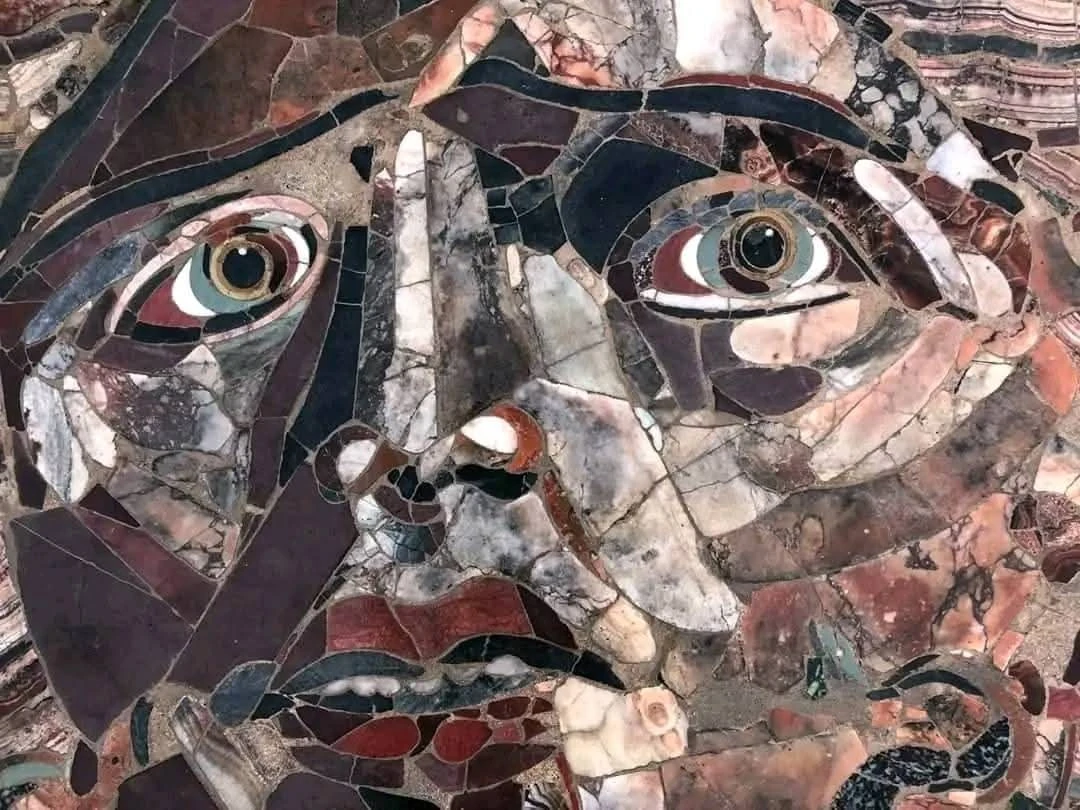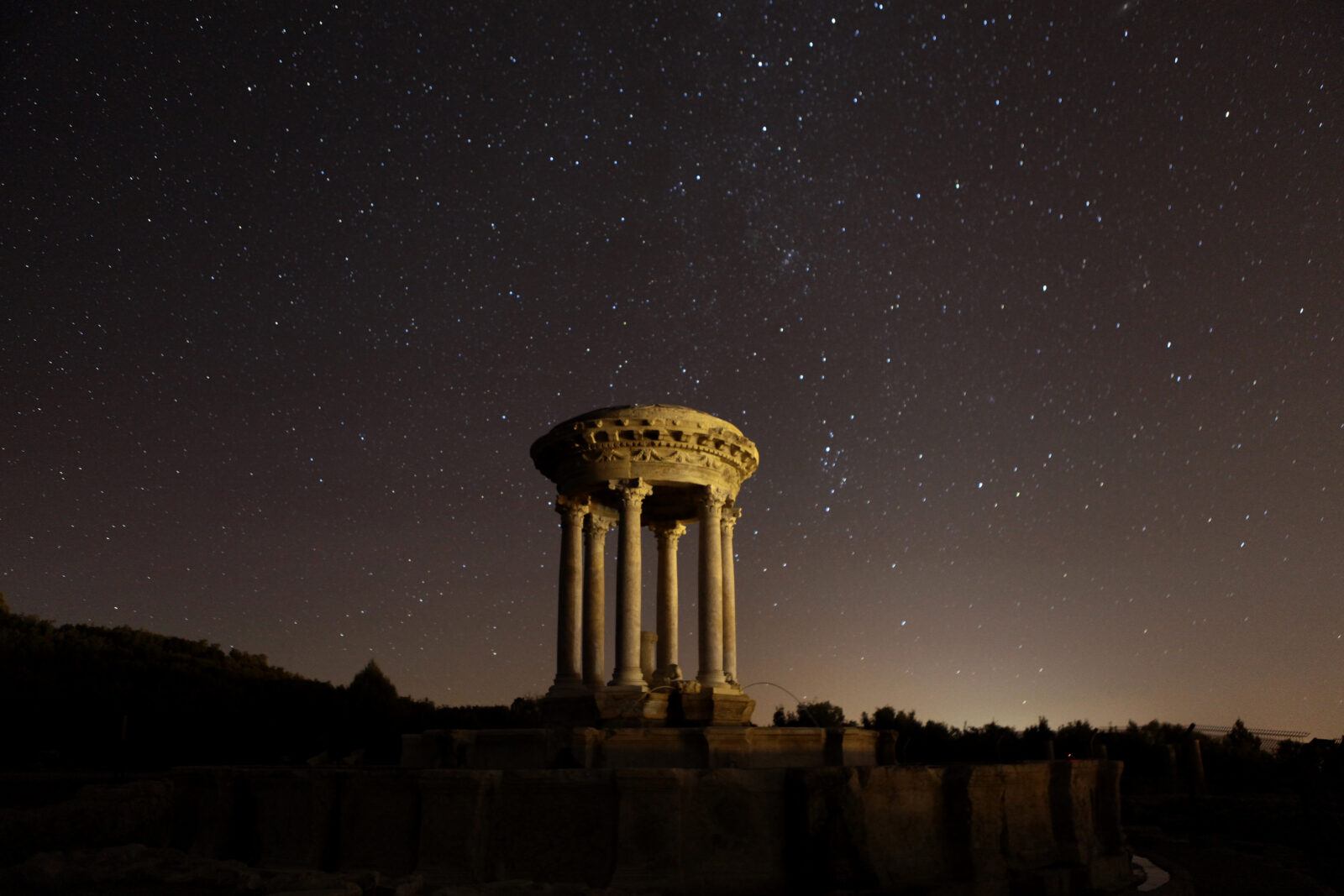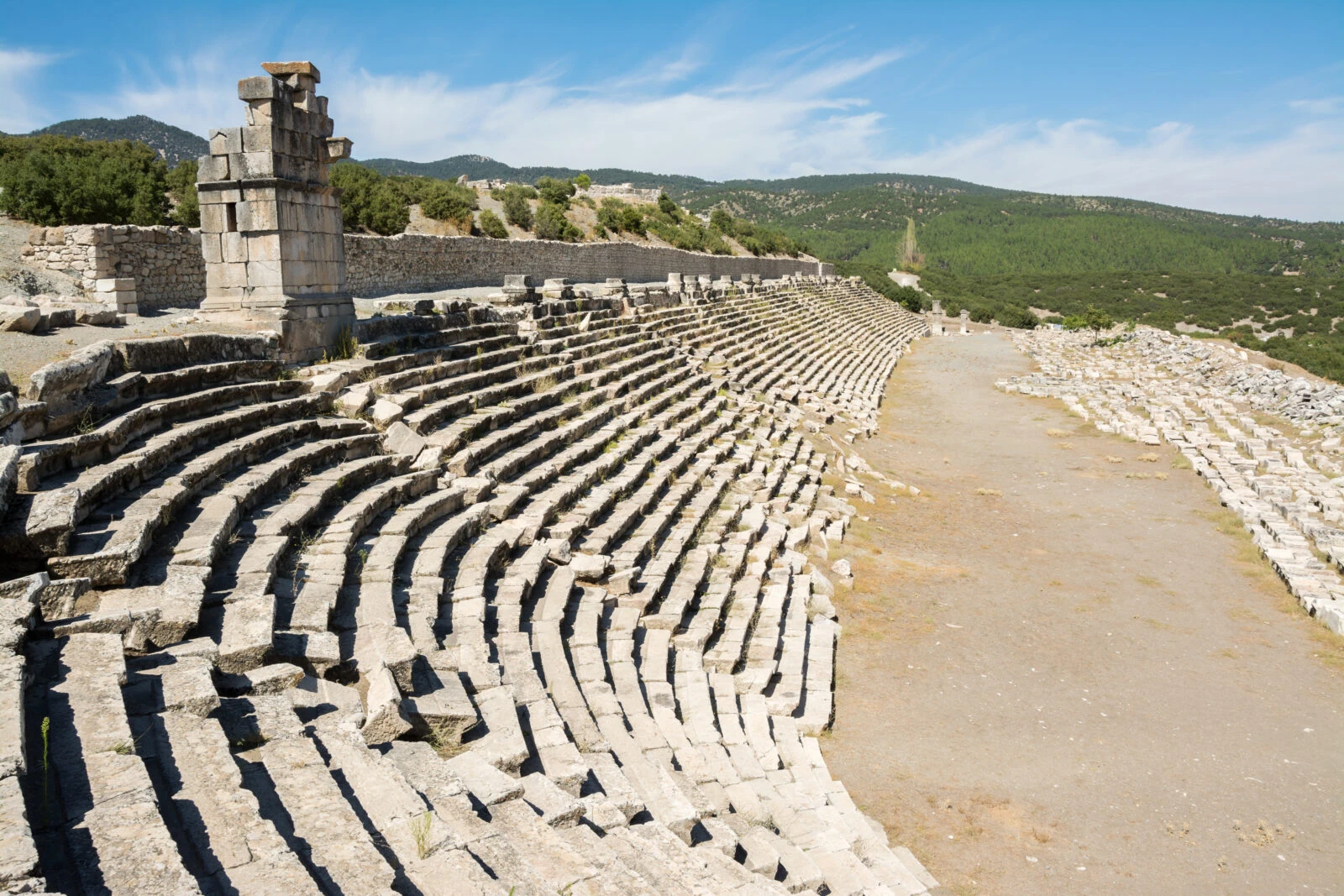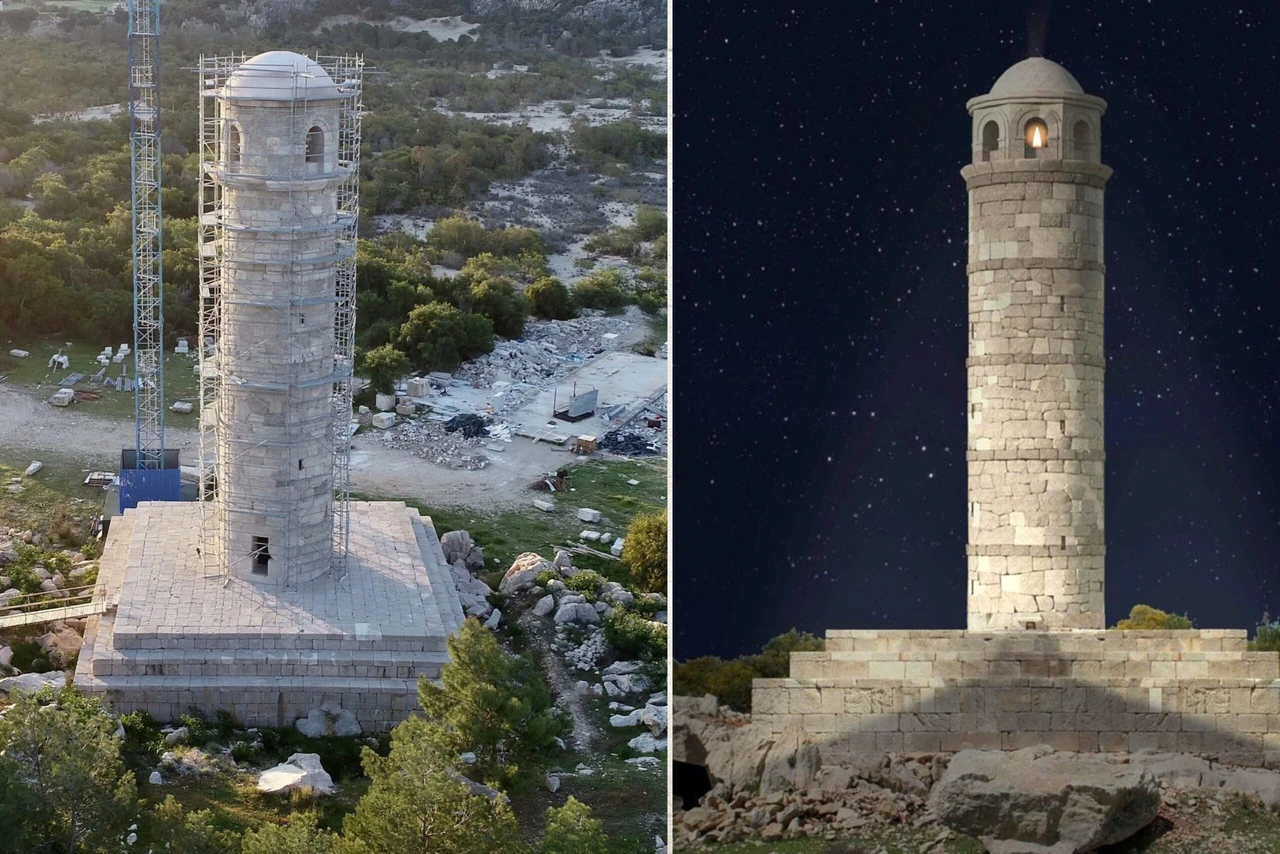Türkiye’s hidden gem Kibyra reopens 2,000-year-old Medusa mosaic
 Aerial photo of the Odeon with the 2,000-year-old Medusa mosaic, which is covered during the winter months at the ancient city of Kibyra in Golhisar, Burdur, Türkiye, April 11, 2025. (Photo via Kibyra Excavations)
Aerial photo of the Odeon with the 2,000-year-old Medusa mosaic, which is covered during the winter months at the ancient city of Kibyra in Golhisar, Burdur, Türkiye, April 11, 2025. (Photo via Kibyra Excavations)
In the heart of Kibyra, an ancient city in the Golhisar district of Burdur, one of the world’s rarest Roman mosaics is once again open to the public. The nearly 2,000-year-old Medusa mosaic, located in the orchestra section of the ancient odeon, has been uncovered after being protected through the harsh winter months by expert restorers.
Constructed using the intricate Opus Sectile technique, the mosaic is composed of multicolored marble tiles and depicts Medusa, the mythical figure believed to turn evildoers into stone with a single glance. Experts believe that this depiction is unique in the ancient world.
According to Professor Sukru Ozudogru, head of the Kibyra excavation team and faculty member at Mehmet Akif Ersoy University, the mosaic will remain open for public viewing until the end of November 2025.

Ancient city of Kibyra: Where gladiators once walked
Located on the western slope of the Golhisar plain, Kibyra is one of the most visually impressive ancient cities in Western Anatolia. Known as the City of Gladiators, Kibyra was a vibrant Roman settlement with a population skilled in agriculture, ironwork, ceramics, medicine, and animal husbandry. Ancient sources also claim that four languages were spoken in the city, underlining its cosmopolitan nature.
The city features meticulously designed architectural remains from the Roman Imperial period. Each structure was built symmetrically to avoid blocking the view of others—a rare approach in ancient urban planning.
Among Kibyra’s standout structures is its stadium, considered one of the most spectacular in Anatolia. With seating for 10,000 spectators, the stadium is believed to have hosted intense gladiator battles, earning the city its famed nickname.

Restoration revives 2,000-year-old monumental fountain
In a remarkable feat of heritage preservation, the ancient fountain of Kibyra has begun flowing once again after a nine-month restoration project supported by the Ministry of Culture and Tourism and the Governorship of Burdur. Built during the reign of the Roman Empire around 23 A.D., the fountain had served the city for nearly 700 years before falling silent.
Standing 7.5 meters (24.6 feet) tall and 15 meters wide, the monumental fountain includes two pools and is located on the third terrace of the city’s agora. A conical canopy supported by six columns once rose from its center, surrounded by six statues of lions and panthers that marked the origins of the spring water. Two of these ancient sculptures have been unearthed and are now exhibited at the Burdur Museum.
This restoration makes Kibyra only the second ancient city in Türkiye to feature a restored and functioning Roman fountain. The first is the renowned Antonine Fountain in Sagalassos, also located in Burdur province.

An archaeological powerhouse in Western Anatolia
Kibyra was first discovered in 2016 and was added to the UNESCO World Heritage Tentative List that same year. Since then, the site has become a symbol of Türkiye’s ongoing archaeological renaissance. In 2022 alone, Türkiye conducted 713 archaeological projects, uncovering more than 10,000 artifacts—placing the country among the top global leaders in excavation activities.
Led by Associate Professor Sukru Ozudogru, the restoration team working on Kibyra’s monumental fountain included archaeologists, restorers, and architects. The team used 168 original blocks from a total of 192 architectural elements, preserving the authenticity of the structure while making it accessible to modern-day visitors.

Planning your visit to Kibyra
Kibyra is 108 kilometers (67.1 miles) from Burdur city center and can be reached via city buses heading to Golhisar. Visitors traveling from Antalya (about 120 kilometers) or Isparta (approximately 50 kilometers) can also make convenient day trips to the site.
Once at Kibyra, you can park your vehicle near the stadium and explore the rest of the site on foot. Be prepared for some uphill walking, and don’t forget essentials like sturdy walking shoes, water, and sun protection—especially during the summer months.
The Medusa mosaic is visible only between April and November, so plan your trip accordingly to witness this rare masterpiece firsthand.



